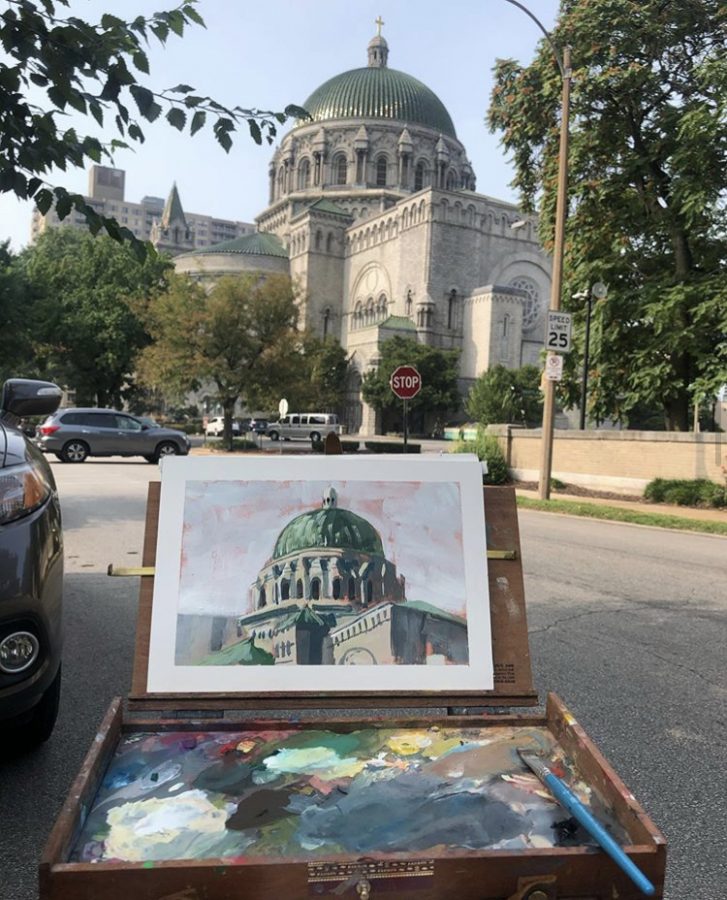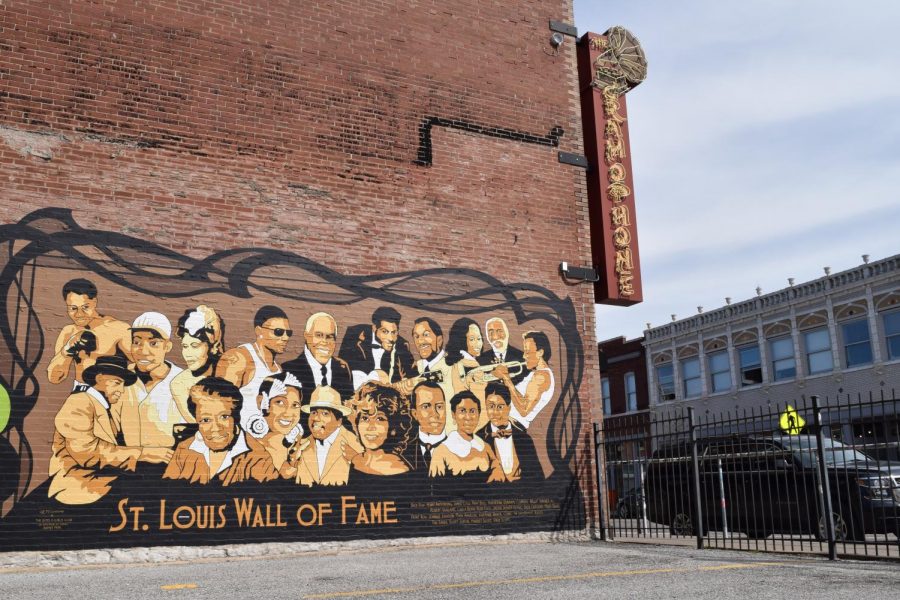Tucked away from the ornate, late-nineteenth century buildings
that give Grand Center its familiar look is a structure of timeless
sophistication swathed in primal simplicity.
Tadao Ando’s Pulitzer Foundation for the Arts (3716 Washington,
754-1850)–the Japanese architect’s first non-residential
creation–is made of pure glass and polished concrete, straight
lines and flat pools of water, but, as the sculptor Richard Serra
has pointed out, within these basic forms Ando captures light and
sky themselves–and incorporates them into the art already on
display in the Pulitzer galleries.
The building’s main room–tall, long and narrow with white walls
and smooth, light-gray concrete–houses about a dozen works (in the
main and lower galleries) at any given time, including Ellsworth
Kelly’s “Blue Black,” which dominates the south wall, at the far
end of the room from the entrance.
Like God’s house before he had kids, the building’s stillness
and solidity are palpable, its dimensions at times eerily
overwhelming, at others comforting–as if Chomolungma herself were
holding you in her great snowy-white bosom.
As one moves through the main gallery, “Blue Black,” two
painted, aluminum panels stacked one above the other emphasize the
templed ambiance of the whole structure: The half-monolith
stretches its blue upward, toward a skylight, evoking the golden
whites of the sun.
Simultaneously, its black heads for the depths of the lower
gallery–a kind of catacomb displaying seemingly ancient ancestral
relics: two works more than a thousand years old and Doris
Salcedo’s primitive-looking “Atrabiliarios,” which features women’s
shoes encased in animal gut.
In the Pulitzer’s courtyard, which it shares with the
Contemporary Art Museum (3750 Washington Blvd., 535-4660), resides
one of the museum’s only permanent exhibits: Serra’s “Joe,” a great
spiral of weathered steel that invites visitors into its orange-red
curves and deposits him in clearing where, at the right angle, he
can see only sun and sky
The Pulitzer, just a short walk north of campus, is open to the
public, free of charge, on Wednesday (Noon to 5 p.m.) and Saturday
(10 a.m. to 4 p.m.), with docent-lead tours at 2 p.m. A complete
history of the museum and interactive guide to current galleries is
available at www.pulitzerarts.org.
-A.I.






